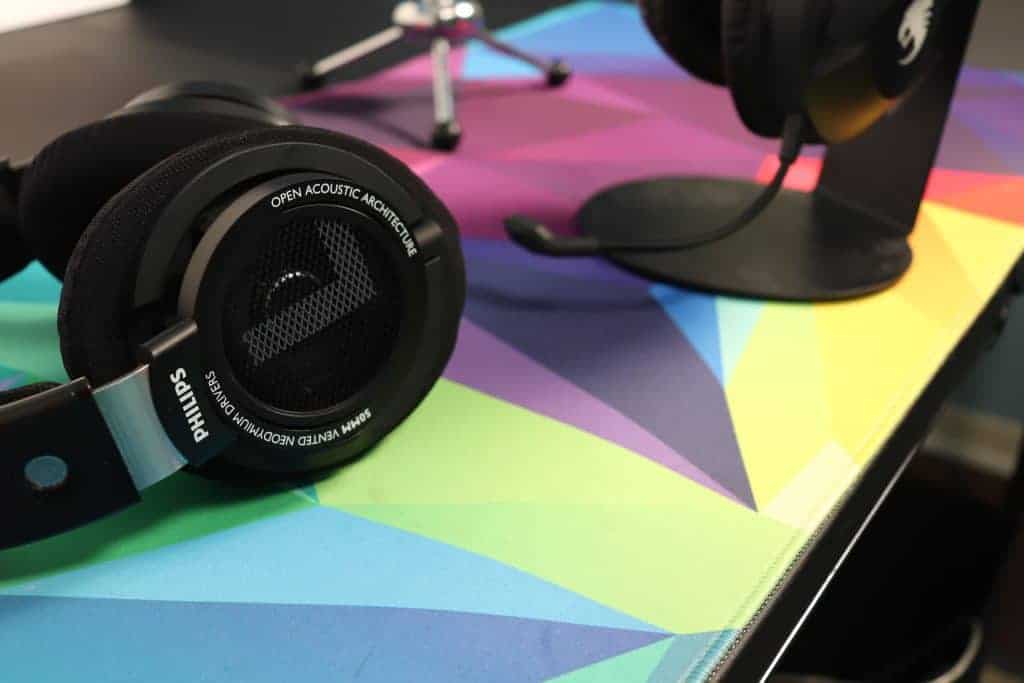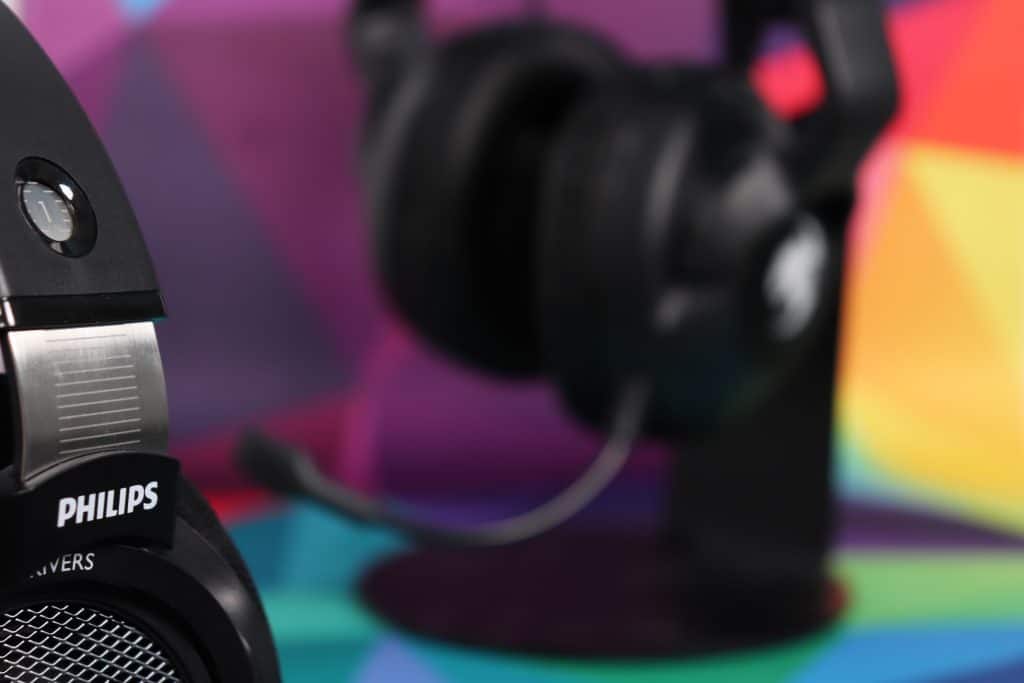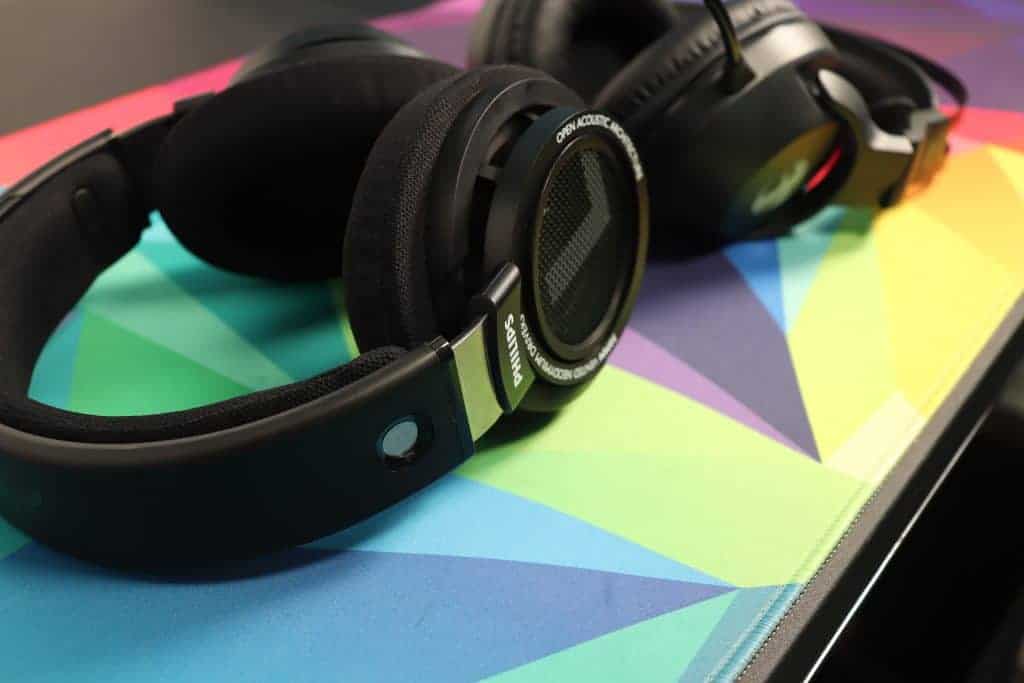Most people use the terms headset/headphones interchangeably, but what if I told you they mean completely different things? Let’s go over the main differences and talk about some of the other factors.
Headphones will not have a microphone, while a headset will have an integrated microphone.
Headsets will usually be cheaper and more convenient to use, making them perfect for gamers and pilots. Headphones will have better sound quality, making them a great option for audiophiles.
Those are the main differences between the two, but let’s break down some of the nuance and explain it a bit further.
Headset vs Headphones: The Microphone is the Key Difference

When looking at headsets and headphones the biggest factor is the microphone.
If it has a microphone, chances are it’s a headset. If it doesn’t, you’re probably looking at headphones.
A headset will have the microphone and speakers bundled into an ultra-convenient package. All you need to do is pop the headset on and you can chat and listen to music simultaneously. Easy as pie.
Headphones on the other hand will only have the speakers. Perfect for those who want to relax and listen to music. But because of this, more care will go into the design and there will be a greater focus on sound quality.
For that reason, headsets are better in situations where convenience matters more than sound quality, while headphones are better for a high-quality music experience.
Headsets will usually be on the cheaper end, making them more accessible for the average person.
High-end headphones can get quite pricey especially when you consider all of the different items that can help boost the sound clarity.
Other Factors That Separate Headsets and Headphones

Let’s look at some of the main ways that headsets and headphones differ besides just the microphone.
The Convenience Factor
One of the main reasons many opt for headsets instead of headphones is the convenience factor of having the headphones and microphone in an all-in-one package.
Headsets are much more versatile and are used in a variety of applications that heavily rely on the convenience of having both packaged together nicely.
Think of pilots, call center workers, and gamers. Convenience trumps better sound quality.
Instead of needing to wear headphones and holding a detached microphone, you can pop both of them on your head without worrying about a mess of cables.
If you plan on sitting on your couch at home and spending a relaxing evening listening to your favorite music, convenience doesn’t matter quite as much.
There are definitely some advantages to having the microphone and speakers separated, such as better sound quality.
There’s a reason why many Twitch streamers, musicians, and YouTubers don’t record their audio with a headset. The microphone on a headset just isn’t the best.
Sound Quality: A Major Difference
The sound quality of a dedicated microphone and headphones will almost always be superior to the quality on a headset.
More care can be taken into the individual design of the microphone and speakers.
While some higher-end headsets can have really nice sound quality, most suffer from distortion and poor tuning.
You’ll experience more finely tuned sound when using dedicated headphones, especially higher-end pairs where a lot of care is taken into every aspect of the design.
This is the reason why many audiophiles opt for headphones instead of headsets.
What you sacrifice in convenience, you make up with in sound quality.
Why Headphones Are (Usually) More Expensive
Headphones, especially high-end ones, will deliver the ultimate listening experience.
Instead of muddy bass, lots of distortion, and a flat sound, you’ll have a much cleaner sound stage.
Each instrument will sound more clear and individual instead of just a mash of different sounds. There will be little muffle, instead just clean audio.
All of these different elements require a very detailed headphone design to get all of the sounds to come out perfectly crafted, which in turn leads to a higher price.
Not to mention, the audiophile world can be quite expensive when you start looking at the rabbit hole that is DACs, Amps, and high-end cables.
When you start looking headphones as package that includes all of these other components, the headphones themselves are just the tip of the iceberg.
In addition, headphones can be made with a wide variety of different drivers too, all of which can have an impact on the sound quality. Here are a few of the main types of drivers:
- Dynamic (Moving Coil Driver)
- Electrostatic
- Planar Magnetic
There are more options out there as well, but these are the most common.
Not to mention, you need to consider the actual tuning of the headphones, the size of the drivers, how the enclosure is made, and how all of that effects the sound stage the headphones create.
I’m not attempting to scare you off from the world of headphones, but once you see how much complexity and variety of designs there are, you can start to understand why the prices increase so much.
Conclusion

The biggest difference between headsets and headphones is whether or not there is an integrated microphone.
There are lots of reasons for why someone would want a headset over headphones (and vice-versa), such as convenience, price, and what you’re planning on using it for.
For the audiophiles out there, you can’t beat a good pair of headphones to listen to your favorite music with little distortion and clear sound.
For those who need the convenience factor of a microphone and speakers in an all-in-one package, a headset should get the job done nicely.
At the end of the day, it’s ultimately up to what you plan on using the headphones/headset for and how that will affect your purchasing decision. But at least now you know not to use the terms headphones/headset interchangeably.
Good luck!
